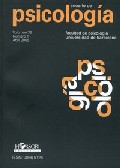The prosody-syntax relationship in sentence processing
Abstract
The attachment of relative clauses with two antecedent nouns as potential hosts is a widely studied research topic in psycholinguistics. Previous research in Spanish shows a preference for high attachment in sentences of this kind. This paper examines the contribution of prosody to the processing of ambiguous and unambiguous sentences of this type. We report two experiments, one of sentence production and the other of sentence comprehension, where prosodic parameters of two kinds were explored and manipulated: temporal features (such as pause and constituent duration or length) and intonational features (such as fundamental frequency contour). In both experiments, prosodic information was used as the disambiguating criterion. Our results show that temporal information (particularly the duration of pauses and of the second antecedent noun) is a key factor in both production and comprehension, and is used as the main evidence for the attachment type of the ambiguous relative clause. In contrast, the use of fundamental frequency in the prosodic disambiguation of these sentences is shown to be less relevant. Finally, relative clause length, another temporal prosodic feature, plays a limited role in the processing of structures of this kind.Downloads
Published
2007-07-05
Issue
Section
Dossier: Forma y significado en el procesamiento del lenguaje (Coordinador: José Manuel Igoa)
License
The authors who publish in this journal agree to the following terms:
Authors transfer to the publisher all copyright for the full term of protection and for all the world.
The authors can post a copy of their articles in accordance with the policy of free access to the journal.


